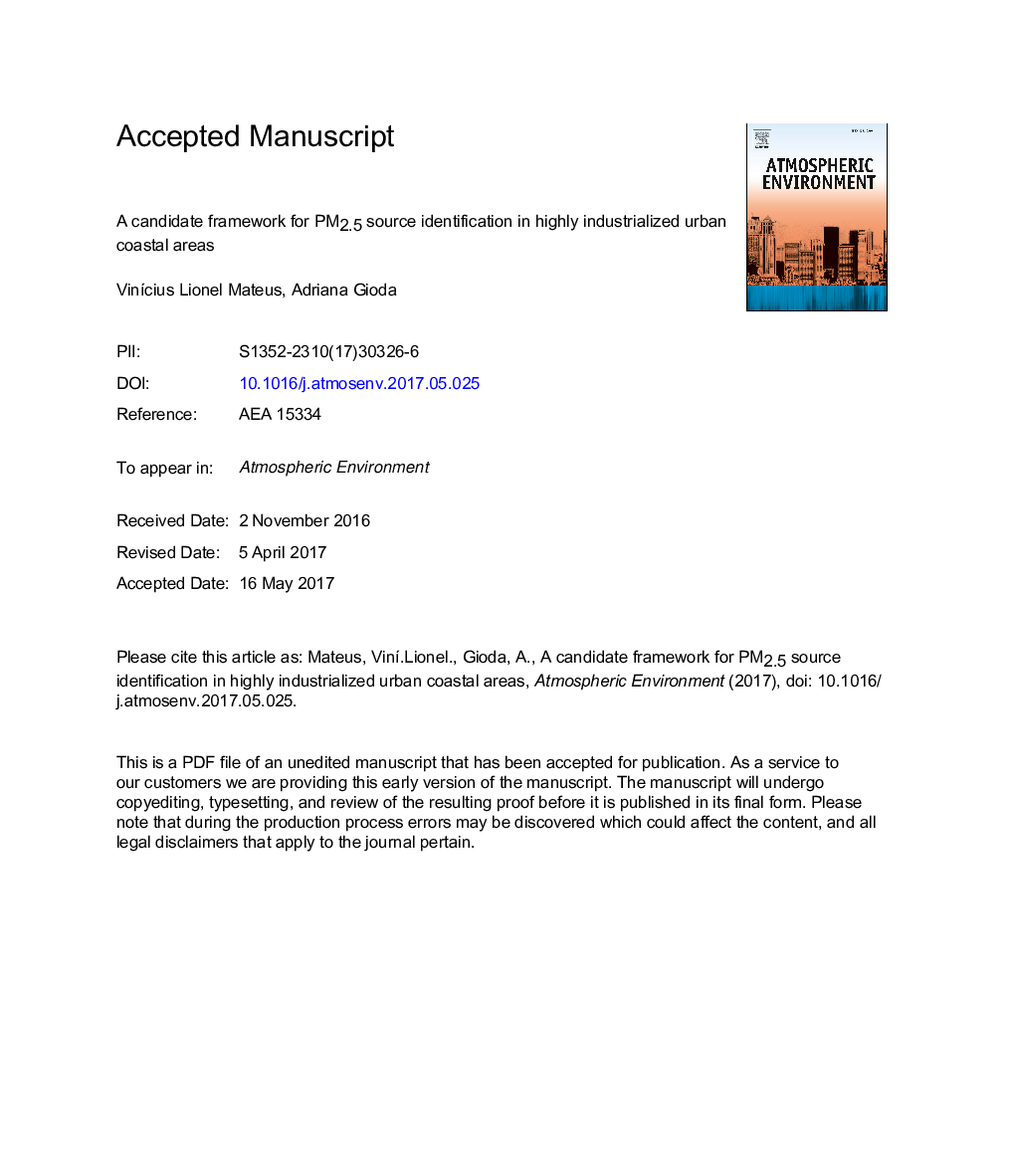| Article ID | Journal | Published Year | Pages | File Type |
|---|---|---|---|---|
| 5753119 | Atmospheric Environment | 2017 | 74 Pages |
Abstract
The variability of PM sources and composition impose tremendous challenges for police makers in order to establish guidelines. In urban PM, sources associated with industrial processes are among the most important ones. In this study, a 5-year monitoring of PM2.5 samples was carried out in an industrial district. Their chemical composition was strategically determined in two campaigns in order to check the effectiveness of mitigation policies. Gaseous pollutants (NO2, SO2, and O3) were also monitored along with meteorological variables. The new method called Conditional Bivariate Probability Function (CBPF) was successfully applied to allocate the observed concentration of criteria pollutants (gaseous pollutants and PM2.5) in cells defined by wind direction-speed which provided insights about ground-level and elevated pollution plumes. CBPF findings were confirmed by the Theil-Sen long trend estimations for criteria pollutants. By means of CBPF, elevated pollution plumes were detected in the range of 0.54-5.8 μg mâ3 coming from a direction associated to stacks. With high interpretability, the use of Conditional Inference Trees (CIT) provided both classification and regression of the speciated PM2.5 in the two campaigns. The combination of CIT and Random Forests (RF) point out NO3â and Ca+2 as important predictors for PM2.5. The latter predictor mostly associated to non-sea-salt sources, given a nss-Ca2+ contribution equal to 96%.
Related Topics
Physical Sciences and Engineering
Earth and Planetary Sciences
Atmospheric Science
Authors
VinÃcius Lionel Mateus, Adriana Gioda,
